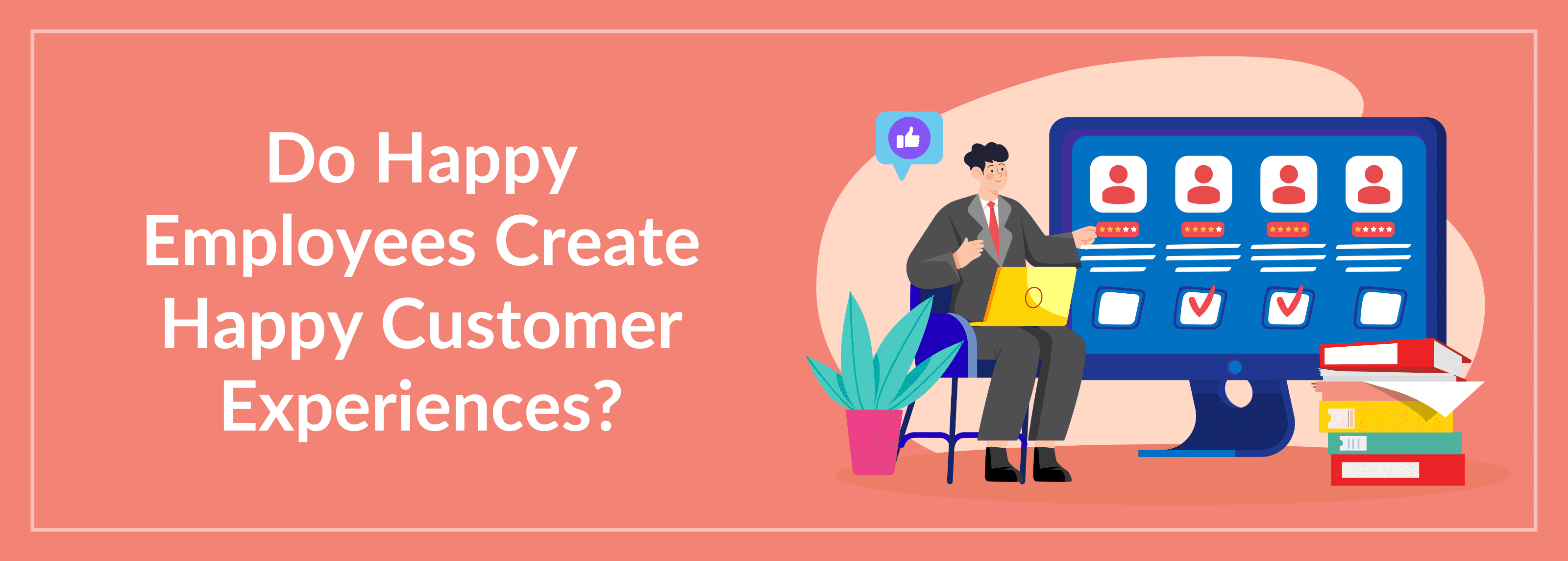The CX – EX Connection: Do Happy Employees Create Happy Customers?
The connection between employee experience (EX) and customer experience (CX) is a business reality. Engaged employees naturally provide better customer service, and satisfied customers reinforce employees’ sense of purpose and motivation.
Let me give you an example.
In 2006, Vineet Nayar, CEO of HCL, boldly told his clients they were no longer the company’s top priority. Instead, the focus would be put on employees first.
His belief was simple: happy employees make happy customers.
Pulling this off was no mean feat, but the results speak for themselves. Employee satisfaction soared, customer service improved, and revenues nearly tripled. By 2009, HCL was named India’s best employer.
You don’t have to make such a bold statement. However, prioritizing employee experience will result in exceptional customer experiences.
Research by Gallup shows that organizations with highly engaged employees outperform competitors by 147% in earnings per share and show a 10% boost in customer ratings.
Exceptional customer experiences don’t happen by chance. They begin with engaged and empowered employees.
Some Real-World Examples of the Connection Between EX and CX
The Ritz-Carlton
The employees of Ritz-Carlton are empowered with a discretionary spend of $2000 to resolve guest issues without managerial approval.
Would this foster ownership and accountability for its employees?
This definitely would result in memorable guest experiences, building both brand reputation and customer loyalty.
Zappos
Zappos is known for its comprehensive training, fun workplace culture, and flexible policies.
Isn’t every customer interaction an opportunity to enhance the customer’s loyalty to the brand? This is the philosophy that Zappos follows.
Employees are encouraged to develop personal connections with customers, often spending hours on calls to ensure satisfaction.
Have you heard about this?
A Zappos employee had a record-breaking 10-hour and 43-minute customer service call, which stands as a testament to their commitment.
This level of empowerment has resulted in driving repeat business and creating lasting relationships with customers.
Have you ever heard of a customer complaining about Zappos?
Southwest Airlines
If you take care of your employees, they will take care of your customers. – Herb Kelleher, founder, Southwest Airlines.
This philosophy is deeply embedded in the company’s culture. Southwest has consistently ranked high in customer satisfaction, largely due to its engaged workforce.
Let me give you an example.
In one of the Southwest Airlines flights, the flight steward introduced himself as follows. “Hello, this is Bingo, and I’ll be your flight steward on today’s flight from Baltimore to Orlando. Some of you might be wondering why I’m called Bingo. Simple! You see, that’s the name my parents gave me. Why? Well, I was the fifth child in my family. My parents desperately wanted to have a boy, and their first four children were girls. So, when I showed up after four girls, it was natural for them to shout, Bingo! So, that’s what my name is.
This exemplifies the enthusiasm employees bring when they enjoy their jobs, making customers feel more connected to the brand.
When businesses prioritize EX, it results in exceptional CX. Businesses that recognize this enjoy stronger loyalty and increased profitability.
Building a Framework for EX and CX to Work Together
In order to do this, you need a structured approach. Here is an attempt to get this right.
Empower Your Employees
Provide employees with decision-making authority to resolve customer issues. Have you ever considered using real time analytics and automated workflows to support your employees in decision-making?
Amazon’s customer service representatives are empowered to offer refunds or replacements instantly, avoiding unnecessary escalations and providing faster resolutions.
Create a Culture of Recognition and Growth
Do you regularly recognize and reward employees for exceptional service?
Do you offer career development programs to increase employee engagement?
Salesforce has a dedicated employee recognition platform, ‘Thanks,’ where peers and managers can acknowledge outstanding contributions in real-time.
Offer Continuous Feedback Loops
Ensure employees receive customer feedback in real time to adjust service approaches. Also, internal feedback systems should be implemented so that employees can share insights on customer pain points.
Your employees are the face of your industry, and they are the ones who come directly in contact with your customers. Their insights would not just help customers but also help improve internal processes.
Starbucks uses internal communication tools and regular ‘Partner Open Forums’ where baristas can share feedback, leading to operational and menu improvements.
Use the Right Technology
Ensure you implement omnichannel contact center capabilities so that your employees have a single view of your customer interactions across all channels and interfaces. Use AI and automation to assist employees in doing their jobs better.
Contact centers that are equipped with AI-driven chatbots should always provide a seamless way for customers to choose to talk to a human agent at any time during the interaction. AI chatbots can help with routine queries, and customers can choose to interact with human agents for complex queries.
Leverage Data
Do you use analytics to measure both EX and CX and identify improvement areas?
Is EX a part of the KPI of all your senior management folks?
Have you aligned customer satisfaction with employee engagement to track success?
Airbnb continuously analyses guest reviews and employee feedback to refine both its platform experience and internal culture, leading to better host-guest interactions.
Customers will never love a company until the employees love it first – Simon Sinek.
A Harvard Business Review study found that companies that excel in CX and EX grow revenues 1.5 times faster than those that don’t.
Businesses that recognize and implement a strongly aligned CX – EX strategy will see measurable gains in both employee retention and customer loyalty.
